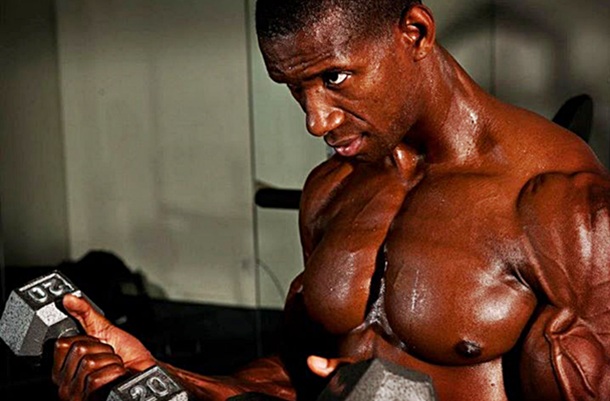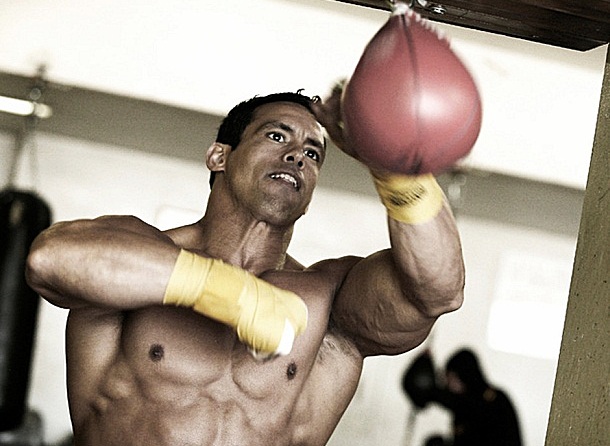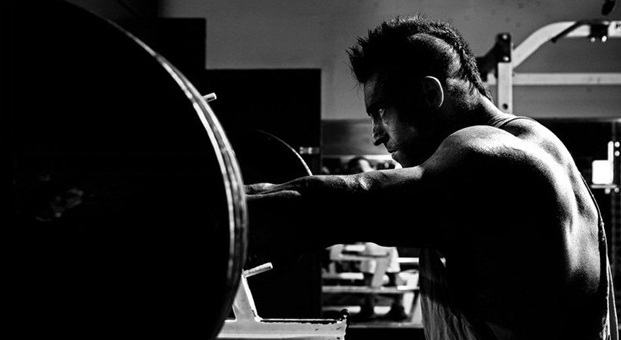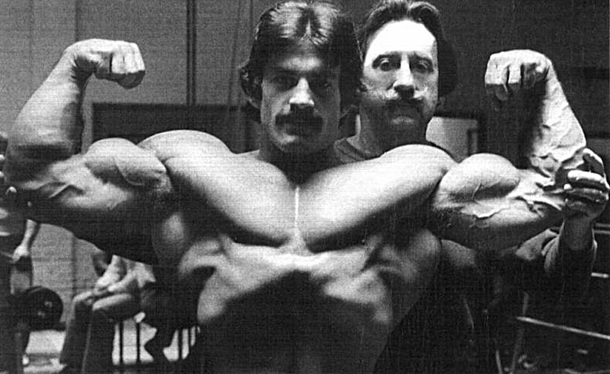As the summer comes to an end and the list of contests on my calendar gets shorter, my mind starts to wander. I will admit that even I try to look a bit past the horizon at times and I start to day dream about muscle gain, and how I’ll improve my physique in the next few cold months even before the competition season is over. I know I am not the only one guilty of this as the allure of getting bigger is what drew most of us to bodybuilding in the first place. What traditionally “tis the season to be bulking”, has gym rats taking to the gym with a whole new set of goals, and they usually revolve around adding as much size as possible.
Just like the fat loss article we tackled a while back “Shredding Tips: Fat Loss Troubleshooting“, this one is about the common mistakes I see occurring during muscle gaining phases of training.

Just like fat loss, there are many misconceptions about what is the most appropriate way of approaching muscle gain.
The following are what I feel are the most commonly repeated mistakes when it comes to adding mass. From forgetting how to turn on the treadmill, to being afraid of adding a bit of fat during a time when you have to overeat. We will cover all of these here.
1) What’s in a name? Stop “bulking” and start improving
The word has to leave your mind now! Simply put, it identifies the situation the wrong way and can influence your approach be it consciously or subconsciously. The famous term “bulk” screams the old cliché “get huge or die trying” and encourages a mindset of making the scale move at all costs. A recipe for disaster, especially in the minds of most young men looking to gain muscle. The truth is that after the first year or two of optimal training and nutrition (mind you most folks take a few years to get these down) most of the muscle that you build that affects the scale will have been built. After the beginning things really slow down, and while you can still create some huge strides in your development they won’t change the scale nearly as much as you think. You do want some weight gain, but that is only to ensure that you are eating enough to gain new muscle, not to be confused with the notion that you are actually gaining that much dry muscle. The amount of muscle you will be gaining after the “honey moon” phase ends is hardly even worth weighing or trying to quantify. Instead it will be something that will be more visually obvious for the most part.
Those who “bulk” usually end up as another 200 pounder who needs to be at 165lbs to see any sign of abs, and will probably end up losing much of what was gained when trying to diet it all off. Call it a time to improve; a time to bring up glaring weaknesses in your physique, so that next time you strip off the fat you’ll look that much better.
Let’s not bulk, let’s improve instead and aim for a slow, steady weight gain rather than a 20 pound gain in three months and a pair of “fatceps.” A general rule of thumb is that for as hard as you work in the gym, and outside the gym with your nutrition, you should therefore be able and comfortable playing on the “skins” team in a game of pick-up basketball. Aim for a 1-3 pound a month rate and where to fall within those ranges has plenty to do with your starting frame and bodyweight. For example a guy that is 6’2”180lbs lean, should be gaining closer to 3lbs a month compared to a guy that is 5’7” 160lbs at the start of a gaining phase. Another thing is how advanced you are in terms of development, as someone who is in their second year of training should be gaining a bit quicker compared to a guy who has been at it for over five years.
Be patient, and don’t rush things or you will end up losing what you have gained, and not to mention not gaining nearly as much as you thought. Gain slow and gain lean and you will have to diet less and keep more of what you have actually gained this way.

2) Being too flexible
Some guys will go from making sure their scale reads 40 grams of oats and not 41 grams of oats, to making sure they are “just getting enough protein” when they finish with a cut. With all my clients I use their offseason to play around with ratios, and caloric amounts etc. It’s a great time to gather data that will make us that much more efficient at making improvements (notice I didn’t say bulk) in our physiques, and once again this data will be of great use when it comes time to lose some fat. It’s a great time to see what works best for you in terms of training, as maybe you come to realize you progress better when you only train three time per week compared to four. The same can be said about nutrition, as perhaps you do better with your fats closer to 15% of total caloric intake instead of 30% etc. I do preach balance and straying a bit off from the precision and attention to detail that a fat loss phase requires, but one should still strive to maintain some sort of order. There is a difference between tracking your intake in say 30 of your 36 weekly meals, to “just making sure you get enough protein.” It’s much easier to be flexible during these phases, but there is a middle ground here that really goes unvisited. Surely there are a few who perhaps are too anal retentive about accounting for every nook and cranny that they consume during this time, but they are few and far between. Much more common are the guys that once dieting is over, go from meticulous to overly passive.
Enjoy the flexibility that comes during this time, but do everything in moderation. This will go a long way in making sure you not only gain more new muscle but maintain a leaner body composition, all while you learn more about what approaches are best for you nutritionally.

3) Dude where is my cardio?
While you will surely not be doing as much cardio as you were while striving to lose fat, it still is an important tool when it comes to muscle gaining phases. Its purpose will no longer be to help push fat loss along, but for health and efficiency. A solid weight training program combined with moderate doses of cardiovascular exercise will go a long way in keeping us healthy. Not much is needed since weight training indeed does more for our cardiovascular fitness than most assume. So you don’t need much and if anything it can be brief and intense when you are up for it. I actually recommend about one higher intensity, shorter duration session for most clients as a part of their schedule. Something like trying to get a new one mile run record, basketball games, barbell complexes etc. I like to make these fun, something to look forward to and avoid playing hamster if possible. Aside from health benefits, cardio can help aid recovery as a healthier circulatory system will be more efficient at getting nutrients to all the right places. Personally, my lower body days (even more so in my offseason) can really tear me up. The next day I am not very motivated to train at all, a 15 pound dumbbell feels like 50 pounds, and I pretty much feel like I was hit by a big rig. Getting some slow to moderate paced cardio really helps me shake this feeling, so I like to get my less intense cardio on the days following some really intense lifting sessions. Simply walking on a treadmill on an incline for 25-35 minutes does wonders for speeding up nutrient delivery, and helping you recover for your next big workout.
Along with aiding in recovery and keeping you healthy, offseason cardio will help you stay tight. Might not seem like much, but an extra 600-700 calories burned in a week adds up overtime, to about 2400-3200 calories a month. A pound of fat is 3,500 calories, so that is about a pound of fat not gained. Why would you not want to do cardio in the offseason? I think I rest my case on that one.

4) Patience
This point really ties in to my first point, because how much muscle we can gain if we eat and train optimally is pretty much set in stone. Considering this, gaining 25 pounds over the holidays in an effort to bulk up is not going to do you any better than gaining 7 pounds over that same time frame. On the contrary it will just give you more to diet off, so you will likely keep less when it comes time to drop fat. Great physiques are not built over a summer, or even a year in most cases. Most anyone you will ever see with an admirable amount of development has a story that dates back years, and in some cases even decades. If you enjoy this ongoing push, putting your head down and enjoying the process will be easy and time flies. Slowly, but surely the tortoise makes it to the finish line first in most cases. While this kind of relates back to the first point I made, this also touches upon weight room progress. From personal experience dating back to my younger years, every time I have tried to rush progress in the weight room and add weight to the bar too quickly, I’ve either ended up hurt, having to go back and correct form, or I simply wasted time. Same goes with trying to add muscle overnight, it usually ended up with me getting fat and looking less impressive than the sleeker version of myself I was trying to improve on. While I am sure you have a great idea of what you want your physique to look like when it is all said and done, it’s equally if not more important to have smaller goals along the way. This will help you stay motivated and gain confidence.
You might want that 315 bench press, but make sure to make room for the other milestones along the way. Make deadlines for a 275 bench press, and then a 295 etc. Most of all enjoy the process since you will find little immediate gratification when it comes to long term progress.

5) Gain some fat
With most guys the main issue is they want to go from a wiry 145lbs to a 200 plus pound Johnny Bravo by year’s end. Then we have the other demographic which now a days is almost just as prevalent as the “bulkers”. This demographic is of course those guys that are “addicted to being lean” for the lack of a better way of putting it. For this group, seeing a bicep vein start to become less prominent causes a panic attack, carbohydrates are cut, and maybe a 7th weekly cardio session is added to the mix. Building muscle is a metabolically expensive process, translation: your body will not invest in the process unless some kind of caloric surplus is looming. So you will need to eat more than your body requires and you will surely have to put on some body fat in the process. Ideally, this is only as much as we need to grow, and yes this will differ from person to person. Some guys can seemingly gain muscle with only having to give up the vascularity on their abs, while others will have to go from a six pack to just the outline of an ab-cage when they flex really hard. Again this will vary, but don’t shoot yourself in the foot by trying to stay leaner than your body wants to during these phases. You want to be in a state where your body is hormonally and metabolically running on all cylinders. This is where the best growth occurs and remember, compared to muscle gain, fat loss is a relatively quick process. Gaining 1-2 pounds of muscle for an advanced level physique might be a one year process or even longer, but losing 5-6 pounds of fat can be done in a few weeks.
Being ultra lean is nice, but learning to embrace the process of making gains is required to develop a physique worth getting shredded. Don’t shoot yourself in the foot by trying to stay too lean, and end up like one of those guys that looks the same every year.

Summing it up
In a nutshell, plan for the long term, and all those good decisions will accumulate over the long run. “Fast food solutions” are never really solutions.
This might not be the year that you add 20 pounds of muscle to your physique, but you can make some drastic changes nonetheless. Think long term, be sensible and work hard, the rest will take care of itself.
Author: Alberto Nunez – Simplyshredded Interview
Website: http://www.3dmusclejourney.com/
Photography Credits: Pavel Ythjall & Alex Ardenti










